WuShock (Wichita State Shockers)
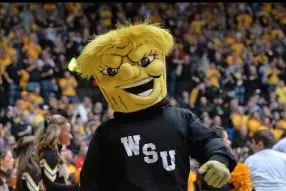
Now, let’s talk about WuShock, the long-time mascot of Wichita State University. At first glance, WuShock might seem like an unlikely contender on this list. After all, he’s a scarecrow, not a human figure, but that’s part of the problem—he’s unsettling in his own unique way. According to Wichita.edu, during the 1904 season, Fairmount manager R.J. Kirk came up with the name “Wheat Shockers” for the team. WuShock’s design is anything but soft or cuddly. He has a tough, furrowed expression with his bulging eyes, and he often appears to be snarling or staring menacingly at fans from the sidelines. His exaggerated features and creepy vibe make him one of the most bizarre and potentially unsettling mascots in college sports history.
While WuShock has been a fan favorite for many years, today’s more sensitivity-driven approach to mascot design would find his original look highly problematic. Mascots today are generally designed to be inclusive, friendly, and approachable, but WuShock’s aggressive, almost hostile appearance would not resonate with the current generation of students, parents, and even university administrators. The fact that WuShock is also a “shocker,” which is a play on Wichita State’s history of wheat farming, doesn’t entirely mitigate the fact that his unsettling presence might be viewed as an attempt to create a “tough guy” mascot out of something as innocuous as wheat. If WuShock were introduced today, there’s a very good chance that he would be pulled in favor of a more relatable, less frightening character.
Chief Noc-A-Homa (Atlanta Braves)
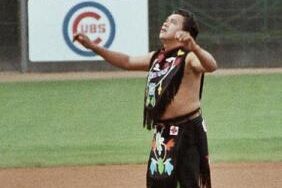
Before the Atlanta Braves became known for their controversial Tomahawk Chop, they had a mascot that was deeply tied to Native American imagery—Chief Noc-A-Homa. According to Wikipedia, this character, introduced in 1964, was a Native American caricature who wore a traditional headdress and fringed buckskin clothing, often seen dancing energetically in the outfield of Atlanta-Fulton County Stadium. His role was simple: to entertain fans with traditional dances, war cries, and a general sense of exuberance. Chief Noc-A-Homa would make an appearance each time the Braves hit a home run, bringing an air of excitement to the crowd. He was even housed in a teepee in the outfield, further solidifying the link to Native American culture.
While many Braves fans saw Chief Noc-A-Homa as a fun and beloved mascot, the use of Native American imagery in sports started to face criticism, especially as public awareness grew surrounding the problematic nature of these stereotypes. In the 1970s and 1980s, Native American groups began to protest the reductive and offensive portrayals that were so prevalent in the world of sports. By 1986, the Braves had retired Chief Noc-A-Homa, acknowledging that the character’s continued presence could alienate a portion of their fan base and disrespect the Native American communities they were meant to honor. If Chief Noc-A-Homa were still around today, he would undoubtedly cause a storm of controversy, especially with the ongoing movement for racial justice in sports. His continued existence would likely be seen as insensitive, and the Braves would face pressure to make sweeping changes.
The Fighting Sioux (University of North Dakota)

For decades, the University of North Dakota used the name The Fighting Sioux for its sports teams, and the mascot was a full embodiment of that name according to Wikipedia. The Fighting Sioux was represented by a Native American warrior figure—complete with headdress, face paint, and a stoic expression—designed to embody the strength and fighting spirit of Native American tribes. While this mascot may have been well-intentioned in its aim to honor Native American culture, it quickly became clear that the image was problematic, reducing a complex and diverse culture to a simple sports symbol.
In the 1990s, the controversy surrounding the Fighting Sioux name and mascot began to escalate as more and more Indigenous groups and their supporters spoke out about how the portrayal was inaccurate and disrespectful. Opponents of the mascot argued that it perpetuated harmful stereotypes and ignored the lived experiences of Native Americans. The issue reached its height in 2007, when the NCAA declared that teams with Native American mascots would face penalties, specifically for those whose images were seen as offensive. By 2012, the University of North Dakota was forced to retire the Fighting Sioux name, finally recognizing that the mascot had become deeply offensive to many. In today’s climate of increased awareness of cultural appropriation, if the Fighting Sioux name were still in use, the university would likely face nationwide protests, lawsuits, and calls for an immediate rebranding. The Fighting Sioux name would be considered blatantly disrespectful, and its continued use would be unthinkable.
Sammy Seminole (Florida State University)
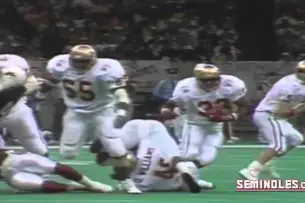
Before Chief Osceola, Sammy Seminole was the mascot of Florida State University, and let’s just say he was much more of a stereotypical Native American character. Sammy was a cartoonish figure, complete with a feathered headdress, buckskin outfit, and exaggerated features, acting out dances and waving a tomahawk at games. The character was intended to bring energy to the FSU sports culture, but instead, it reinforced a negative stereotype that many Indigenous groups found offensive.
In the 1960s and 1970s, as conversations around racial sensitivity and representation grew, Sammy’s portrayal of Native American culture began to feel more like cultural appropriation rather than a respectful homage. Many Native American advocates argued that using a cartoonish caricature to represent an entire group of people was not only inaccurate but also damaging to their image and history. According to Wikipedia, Florida State responded to the growing protests by retiring Sammy Seminole and introducing Chief Osceola in 1978, a much more thoughtful and respectful representation of the Seminole people, created in consultation with the Seminole Tribe of Florida. While Chief Osceola is still a beloved figure at FSU today, Sammy Seminole would not stand a chance in today’s climate. If he were still around, he’d be the subject of massive protests, university boycotts, and campaigns calling for his immediate removal.
The Stanford Indian (Stanford University)
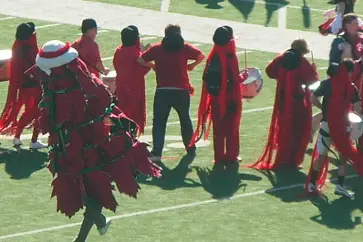
Before Stanford University became home to the Tree, one of the most unusual and iconic college mascots, it was represented by the Stanford Indian—a mascot that was a cartoonish caricature of a Native American warrior. According to Stanford Athletics, from the 1930s to the 1970s, this figure was used as the symbol for Stanford’s athletic teams, with the warrior appearing in full headdress and feathered attire at sporting events. While the image was intended to symbolize the strength and bravery of Native Americans, it came across as stereotypical and dehumanizing.
By the 1970s, there was growing recognition that the use of such a mascot was disrespectful, and protests against the mascot grew louder. Stanford’s Native American student groups, along with national Indigenous organizations, pushed for the retirement of the Stanford Indian because of its reductive portrayal of Native American people. In 1972, after much debate and mounting pressure, the university decided to retire the mascot and replace it with a more neutral and non-offensive character—the Stanford Tree. The Tree may not be the most conventional mascot, but it marks a turning point for the university in its efforts to remove racially insensitive symbols. Today, if the Stanford Indian mascot were still used, it would be met with widespread protests and calls for the university to take responsibility for perpetuating harmful stereotypes. It’s a reminder that the use of Native American imagery in sports has been an ongoing conversation, with many schools having to reconsider their choices as times change.
The Cleveland Indians’ Chief Wahoo
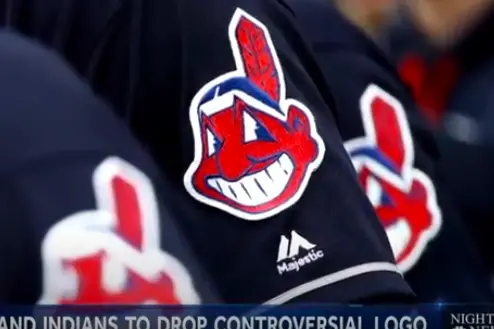
For decades, Chief Wahoo was one of the most recognizable yet controversial mascots in professional sports. Designed as a bright red, wide-grinning caricature of a Native American, Chief Wahoo was the official logo of the Cleveland Indians, appearing on hats, jerseys, merchandise, and stadium banners. To many fans, he was a beloved symbol of their team’s history, but to others, he was a glaring example of racial insensitivity. The exaggerated features, including his large nose, single feather, and overly enthusiastic expression, made him feel more like a cartoonish stereotype than a respectful representation of Native American culture.
The controversy surrounding Chief Wahoo wasn’t new—it had been brewing for decades. Activists and Indigenous groups had been calling for his removal since the 1970s, arguing that using a caricature of an entire people as a team mascot was dehumanizing and offensive. However, it wasn’t until 2018 that the Cleveland Indians officially phased out Chief Wahoo from their uniforms and branding. In 2021, they went a step further by changing the team’s name entirely, rebranding as the Cleveland Guardians to move away from Native American imagery altogether. Had Chief Wahoo still been around today, he would undoubtedly be one of the most protested sports symbols in America, sparking boycotts and national debates on racial representation in sports.
The Washington Redskins’ Native American Mascot
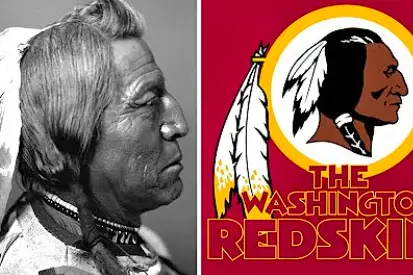
For nearly 90 years, the Washington Redskins had one of the most contentious team names and mascots in sports history. The team’s logo featured a detailed profile of a Native American warrior, complete with long braids, a feathered headdress, and a stoic expression. While fans argued that the name and logo were meant to honor Native American warriors, Indigenous activists and civil rights groups saw it as an outdated racial slur that had no place in modern sports.
The controversy surrounding the Redskins name was one of the longest-running debates in the NFL. Protests erupted nearly every season, with Native American organizations calling for the name to be changed. Defenders of the name, including team owners and long-time fans, insisted that it was a tribute to Native American strength and culture. However, as public awareness about racial insensitivity in sports branding grew, the pressure became impossible to ignore. In 2020, following a wave of corporate sponsorship threats and national protests, the team finally dropped the Redskins name and rebranded as the Washington Commanders. If the team had refused to change, it would undoubtedly be facing even greater backlash today, with lawsuits, boycotts, and a tarnished reputation looming over the franchise.
Colonel Reb (University of Mississippi)
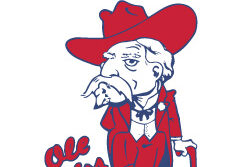
Before the Ole Miss Rebels had their modern-day bear mascot, they were represented by Colonel Reb, a plantation-style Southern gentleman with a white mustache, cane, and wide-brimmed hat. The character was meant to symbolize the Old South, a nod to Mississippi’s Confederate history. However, as the country’s views on race and historical representation evolved, Colonel Reb became an increasingly controversial figure.
For many, Colonel Reb wasn’t just a harmless Southern icon—he was a direct reminder of the Confederacy, segregation, and racial injustice. His presence at games, waving his cane while fans chanted for the Rebels, became an uncomfortable sight for many students and alumni. By 2003, the university made the decision to retire Colonel Reb as the official mascot, though he still appeared on unofficial merchandise for years. Today, if Colonel Reb were still parading around the sidelines at football games, he would be met with widespread criticism, national headlines, and student-led protests demanding his removal.
The Atlanta Braves’ Screaming Indian Logo
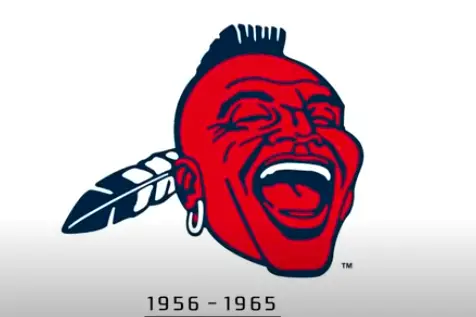
Before the Tomahawk Chop chant became a source of controversy for the Atlanta Braves, their logo itself was under scrutiny. In the 1950s and ’1960s, the team used a logo featuring cartoonish Native American figure with a wide-open mouth, appearing to let out a loud “war cry.”. The exaggerated features and offensive stereotype made it one of the most problematic images in sports branding at the time.
Although the Braves eventually replaced the logo with the now-famous Tomahawk design, their continued use of Native American symbolism has kept them in the spotlight for controversy. Protests still emerge over the Tomahawk Chop, a chant where fans mimic Native American war cries while moving their arms in a chopping motion. If the original Screaming Indian logo were still in use today, it would be seen as highly offensive, leading to mounting pressure on the team to rebrand completely.
Chief Illiniwek (University of Illinois)
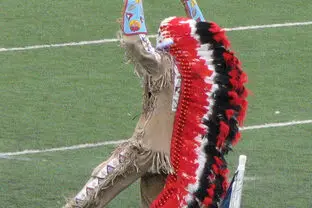
For over 80 years, the University of Illinois used Chief Illiniwek as its official mascot. Dressed in full Native American regalia, including a headdress and buckskin outfit, Chief Illiniwek would perform elaborate halftime dances, allegedly inspired by traditional Indigenous ceremonies. The routine was meant to honor the Native American heritage of the region, but over time, it became clear that many saw it as an act of cultural appropriation rather than respect.
Native American groups and activists began protesting as early as the 1980s, arguing that the university was reducing their culture to a performance for entertainment. The controversy grew stronger each year, with national organizations like the NCAA stepping in to apply pressure. Finally, in 2007, the university officially retired Chief Illiniwek, though his image still lingers in certain fan circles. If he were still around today, the backlash would be even more severe, with intense scrutiny over the ethics of using Native American imagery in sports.
YoUDee’s Confederate-Era (University of Delaware)
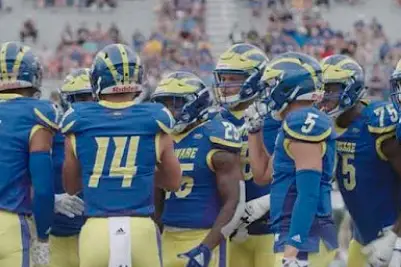
Today, the University of Delaware’s beloved blue hen mascot, YoUDee, is an energetic, harmless bird known for hyping up crowds. But few people remember that his predecessor had a much more problematic history. Back in the early 20th century, the university’s sports teams were associated with imagery that romanticized the Confederacy, including references to Confederate soldiers and Southern heritage.
While not as blatantly offensive as some other mascots on this list, the association with Confederate-era themes would not sit well today. If the school had stuck with its old branding, it would have undoubtedly faced national protests, petitions, and demands for immediate change. Instead, the transition to YoUDee helped the university avoid much of the controversy that has plagued other schools with similar histories.
The Syracuse Saltine Warrior

Before Otto the Orange became the cheerful and inoffensive face of Syracuse University, the school had a completely different mascot—one that would be completely unacceptable today. From the 1930s to the late 1970s, Syracuse’s athletic teams were represented by the Saltine Warrior, a Native American figure dressed in buckskin, war paint, and a full feathered headdress. The character was meant to symbolize strength and resilience, but it was built entirely on stereotypical and exaggerated depictions of Indigenous people. Fans cheered as the Saltine Warriors performed at games, often engaging in mock “war dances” and staged battle routines, reinforcing Hollywood-style misconceptions of Native American culture.
By the 1970s, however, attitudes were beginning to shift. Native American students and activists at Syracuse started voicing concerns that the mascot was not an “honor” but a harmful caricature that reduced a rich and diverse culture to a sports symbol. The protests gained traction, and in 1978, the university officially retired the Saltine Warriors. While some long-time fans were upset by the decision, the move was widely praised by Indigenous groups and those pushing for more respectful representations of Native culture in sports. If the Saltine Warrior were still around today, it would undoubtedly be at the center of a major firestorm. Syracuse would likely face intense pressure from national organizations, including the NCAA, Indigenous advocacy groups, and even corporate sponsors, forcing them to change the mascot or face serious consequences. Instead, the school wisely transitioned to Otto the Orange, a goofy, grinning fruit that—while bizarre—is far less controversial.
The Fighting Irish’s Original Logo
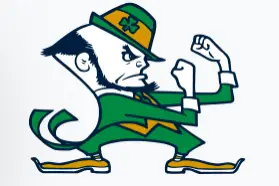
Even today, Notre Dame’s “Fighting Irish” mascot is a topic of debate, but earlier versions of the logo and imagery would absolutely not survive in today’s world. The current leprechaun, while still controversial in some circles, is a toned-down version of the original design, which was far more stereotypical and exaggerated. Older depictions featured an angry, pugnacious Irishman with a massive, bulbous nose, wild hair, and fists permanently raised for a fight. This version of the logo played into offensive tropes that had been used for centuries to depict Irish immigrants as drunken brawlers, hot-headed troublemakers, and unruly street fighters.
The stereotype of the “fighting Irish” has roots in 19th-century anti-Irish propaganda, when Irish immigrants in the U.S. were often portrayed as violent, reckless, and unfit for civilized society. While many Irish Americans later reclaimed the “fighting spirit” label as a symbol of perseverance and strength, the original logo still carried the baggage of those old racist caricatures. Over time, Notre Dame softened the design, making the leprechaun more cartoonish and less aggressive. However, even in modern times, there have been discussions about whether the Fighting Irish branding is outdated and should be reconsidered. If the earlier versions of the logo were still in use today, the backlash would be immediate, with Irish cultural organizations and anti-stereotyping advocates likely calling for a redesign. While Notre Dame has largely avoided major controversy, the school remains one of the last to have an ethnic-based mascot, something that would be nearly impossible to introduce in today’s sports world.


